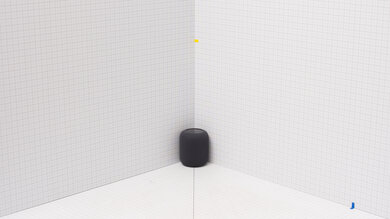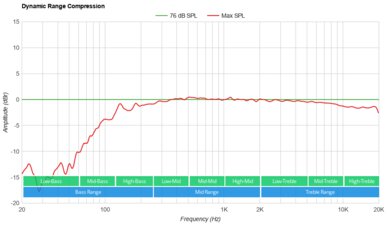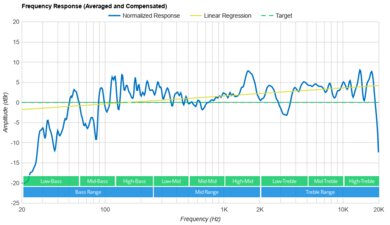- Table of Contents
- Intro
- Review Updates
- Best Speaker
- Best Budget
- Comparison
- Lineup
- Page Updates
- Conclusion
- Comments

Apple is a tech brand known for making phones, laptops, watches, and tablets, though they've also made some speakers. The best Apple speakers have built-in Siri capabilities, making them suitable for home use. We've tested three Apple speakers, though only two remain on the market, as the Apple HomePod (1st generation) has been discontinued. However, you can still choose between the Apple HomePod (2nd generation) and the Apple HomePod mini.
Updates
- 11/11/2024 Apple HomePod mini updated
- 02/13/2024 Apple HomePod (2nd generation) updated
- 02/15/2023 Apple HomePod (1st generation) updated
-
Best Apple Speaker
Music7.2Videos/Movies6.0Podcasts6.5Voice Assistant9.2Outdoors4.5Battery PoweredNoSpeakerphoneYesVoice AssistantYesBluetoothNoWi-FiYesThe best Apple speaker we've tested is the Apple HomePod (2nd generation). Released in 2023, this sleek, wired-only smart speaker has a similar design to its predecessor with an improved overall sound quality. The most noticeable difference between the two models lies in their bass performance, as the 2nd gen brings much more thump and rumble to the mix, making it a great choice for listening to bass-heavy music like EDM and hip-hop. Plus, the manufacturer has designed its bass-EQ microphone to keep a steady response in the lower frequencies, meaning you can turn down the volume without decreasing the overall thump and punch.
This speaker is designed to easily integrate with your other Apple products. Since it supports Apple AirPlay, streaming audio wirelessly from your iPhone or iPad is a breeze. Plus, you can link the speaker to other compatible Apple devices to spread audio throughout multiple rooms in your home. As with most Apple speakers, you won't find any sound customization tools, but its automatic room calibration device provides a solid sound by adjusting the device's output based on the acoustics of your room. Built-in Siri support means you enjoy hands-free control right from the comfort of your couch. If you want a speaker to fit into your Apple ecosystem, it's a really solid pick.
-
Best Budget Apple Speaker
Music6.4Videos/Movies5.6Podcasts6.4Voice Assistant8.5Outdoors4.4Battery PoweredNoSpeakerphoneYesVoice AssistantYesBluetoothNoWi-FiYesIf you're looking for a more affordable Apple speaker, consider the Apple HomePod mini. It's another smart speaker with built-in Siri support that integrates easily with your existing Apple products, like your iPhone or iPad. Thanks to Apple AirPlay support, wireless streaming is easy; you can enjoy all the music and podcasts stored on your devices on your speaker. Similarly, you can pair multiple speakers together to spread audio throughout different rooms in your home, which is a cool touch.
This speaker offers solid performance for the price, but there are some key differences between it and the more premium Apple HomePod (2nd generation). You'll notice that the mini is, as its name implies, much smaller than the traditional HomePod. As a result, it's not much of a surprise that it doesn't get as loud as the larger model, and it can't reproduce as much low bass. Audiophiles and bass lovers will likely want to opt for its larger cousin, but if you mostly listen to content without a lot of bass mixed in, like podcasts or more vocal-centric music genres, it's not a huge deal.
Compared To Other Brands
-
Compatible with Apple AirPlay.
Generally, Apple speakers support Apple AirPlay, so you can pair your iPhone to the speaker to play audio content wirelessly. The speaker and your iPhone must be connected to the same Wi-Fi network to use Apple AirPlay. -
Built-in voice assistant.
Apple speakers typically come with a built-in Siri voice assistant. Siri usually understands you even if you're far away, though the Apple HomePod performs better in noisier environments than the HomePod mini. -
Good soundstage.
The Apple speakers we've tested have incredible directivity thanks to their 360-degree design, resulting in soundstages that are perceived as open and spacious. However, they must downmix stereo content into mono, resulting in a less immersive-sounding soundstage.
-
Can't easily stream audio content over Bluetooth.
While you can use Bluetooth for audio handoff, which lets you transfer audio from your iPhone to the speaker, Apple speakers don't support Bluetooth pairing for playing audio content. You can stream audio content using this configuration if the speaker and your iOS device are on the same Wi-Fi. -
No EQs.
The Apple speakers we've tested don't have an EQ to let you tweak their sound profile. They have fairly balanced sound profiles out of the box, though. -
Wired design.
You need to plug the Apple speakers we've tested into a power source for use, which reduces their versatility. They're more suitable as home speakers than portable speakers. -
Not impact or water-resistant.
Since the Apple speakers we've tested are generally for home use, they aren't impact-resistant or water-resistant. They typically aren't rated for dust resistance, either.
Apple vs Amazon
Apple and Amazon both manufacture smart home speakers with built-in voice assistant support. Amazon's Echo series offers well-designed wired speakers for home use in several sizes and price points to meet your needs. Naturally, they rely on Amazon's Alexa voice assistant instead of Apple's Siri. Generally, they offer a few more sound customization tools in the form of bass and treble adjustments.
Apple vs Google
While Apple's speakers are designed for easy integration with the Apple ecosystem, Google's speakers are designed with other Google products in mind. You'll find built-in Google Assistant rather than Siri and Chromecast built-in support rather than Apple AirPlay compatibility. These sleek, wired-only home speakers are available at similar prices, though Google's speakers come with more sound customization tools, like bass and treble adjustments.
Apple produces premium smart speakers designed for home use and easy integration into your existing ecosystem. However, they don't come with an EQ to customize their sound. Additionally, they're hard to pair with devices over Bluetooth, and some of their functions aren't compatible with Android devices.
Recent Updates
-
We haven't reviewed any new Apple speakers recently, but we've checked that these picks are still accurate and in stock.
-
We haven't tested any new Apple speakers since the last update, but we've made minor updates to this article to improve its clarity and accuracy.
-
Sep 25, 2024 : We've checked this article for accuracy and clarity but have made no changes to the text.
-
Jun 27, 2024 : We've checked the text to ensure it's still accurate and up-to-date but have made no changes.
-
Feb 27, 2024 : We've reviewed the text to ensure our picks are the best for their categories. Also, we've made a few minor text edits for clarity.
Conclusion
Apple speakers generally have Siri voice assistant built-in and must be plugged into a power source. They're compatible with Apple AirPlay for streaming audio content from an iPhone, but you can't easily pair them with devices via Bluetooth. Typically, they're not water or impact-resistant since the manufacturer designed them for home use. While there are currently only two Apple speakers available for purchase, you can look at the best speakers for iPhone if you're looking for other iOS-compatible speaker options.
Test Results
Comments
Best Apple Speakers: Main Discussion
What do you think of our picks? Let us know below.
Looking for a personalized buying recommendation from the RTINGS.com experts? Insiders have direct access to buying advice on our insider forum.
- 21010
Hello. As you know, the 85-inch version of the Samsung CU7000 model has direct backlighting. Do you think this will make the 85 inch version brighter? Or does it give the same brightness performance as edge backlighting? Thanks.


































